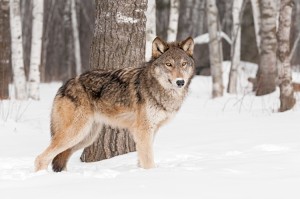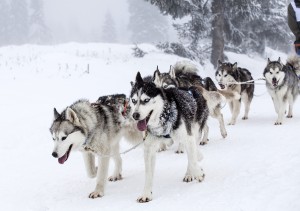Monster Wolf Unleashed
Friday, November 20th, 2020
A rural official in Japan shows off a mechanical Monster Wolf, invented to frighten away wildlife.
Credit: © Toru Yamanaka, Getty Images
The Japanese motion picture Gojira (1954) introduced one of the most recognizable monsters in popular culture, often called by its American name, Godzilla. In the film, the giant, dinosaurlike monster goes on a destructive rampage through Tokyo. Now, Japan has a new monster—but, unlike Godzilla, this monster protects the country’s people.
This fall, officials in the city of Takikawa—on Japan’s northern island of Hokkaido—installed two mechanical wolves near a residential neighborhood in which bears had injured or killed people in recent months. Wild bears in search of food had been entering areas on the edge of Takikawa, walking through yards and rummaging through trash. Rural areas often serve as barriers between the wilderness and urban areas. But, as rural populations shrink, so too does the barrier between wilderness and populated areas.
Each Monster Wolf, as the machines are called, looks a lot like a normal wolf, if you ignore the metal legs and flashing red eyes. A Monster Wolf is 4 feet (1.2 meters) long and just under 3 feet (0.9 meter) tall. Along with its fake fur and bared fangs, the Monster Wolf shares perhaps the wolf’s most distinctive feature, an eerie howl. The Monster Wolf’s head has motion detectors that are triggered when intruders approach. The wolf then produces howling, screeching sounds. Other frightening noises the robot can imitate include a dog’s bark, a hunter’s voice, and gunshots.
The mechanical wolves in Takikawa are not the country’s first. Since the Monster Wolf was created in 2016, more than 70 of them have been installed in communities across Japan. The creations have previously scared off such animals as deer and monkeys, which have been filmed leaping away from the mechanical nightmares. Since the wolves showed up in Takikawa, there have been no bear sightings.




